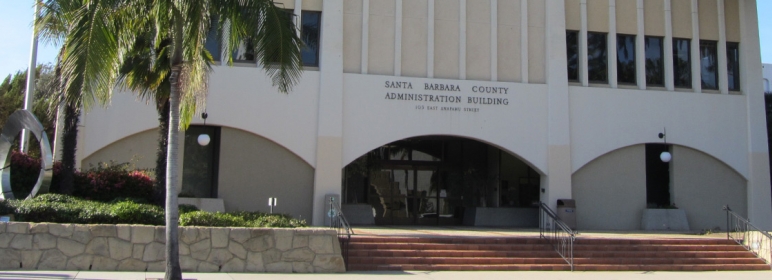The County of Santa Barbara’s Zero Net Energy Facilities Resolution sets an interim target for 50% of new county-owned facilities beginning design after 2020 to be ZNE and requires that all new facilities and major renovations beginning design after 2025 will be ZNE.
– Supervisor Doreen Farr
Background
The jurisdictions of southern Santa Barbara County have a history of going beyond state codes to advance sustainability efforts. This culture is facilitated in part by the collaboration among members of the South Coast Energy Efficiency Partnership, which includes two utilities, three cities and the county. The county also has established an energy and climate action plan, including a benchmarking policy for its facilities.
When the county board of supervisors was interested in expanding its sustainability efforts, the county energy manager championed the idea of transforming county-owned buildings into ZNE buildings. California set goals for achieving ZNE in residential, commercial and state buildings – but there is no mandate for municipal buildings. Staff proposed creating a ZNE goal for county buildings that mirrored the goal for state buildings. When presenting the resolution, Assistant Director of General Services Greg Chanis said, “Adoption of the zero net energy resolution will bring Santa Barbara County in alignment with emerging strategies and regulations from both the federal and state level related to zero net energy construction.” He also cited studies from the National Renewable Energy Laboratory and Pacific Gas and Electric that conclude ZNE buildings are technically feasible.
The supervisors cited local jobs, public health and leadership as motivators for supporting sustainability initiatives, and cost-effectiveness was cited as both a supporting factor and a concern. Some supervisors questioned whether the ZNE resolution’s timeline was aggressive enough, but they ultimately chose alignment with the state’s timeline. Notably, Supervisor Salud Carbajal expressed interest in forming a task force comprising several county departments to provide strategic focus for the county’s various sustainability efforts. (See Recommendation #2 in ZNE Roadmap for Local Governments.) The Board approved the ZNE resolution with a 4-1 vote on March 4, 2014, and included it in its 2014 Sustainability Progress Report.
– Supervisor Salud Carbajal
Funding
The resolution has not received dedicated funding yet, but is anticipated to be incorporated into the budgeting process in spring 2015. Solar installations proposed in the 2015 county budget would be among the first capital improvement projects in support of the ZNE resolution.
Impact
The resolution set a vision that is driving development of supporting policies and ordinances. The board recently enacted a policy to commission and retro-commission county buildings. The momentum for energy-efficient buildings and retrofits is growing, with a new commitment to incorporate both energy efficiency and renewable energy together into holistic projects. A key next step will be to bring even more agencies on board and to identify funding mechanisms for the suite of actions needed to reach zero net energy consumption.

